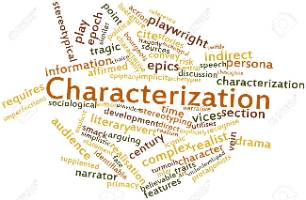
Students will use two-dimensional (2-D) figures and nets to explore three-dimensional (3-D) figures and will talk about how 3-D figures combine to create sculptures. Read more »
3-D Shapes
Course
Subject
Grade Level
Standards

This lesson addresses the components of evidence used to support hypotheses, as well as qualitative versus quantitative and primary versus secondary. This would be a good lesson to start the year and requires no prerequisite skills. This lesson includes optional modifications for distance learning.... Read more »
Experimental Components
Related
Grade Level
Subject

This lesson provides an overview of the key events and concepts of the Vietnam War. Using hands-on activities and discussions, students are able to explore the vocabulary and multiple perspectives of the war. This lesson is meant to be taught after this era and subject have been introduced to students.... Read more »
The Vietnam War
Grade Level
Subject
Course
Standards

In this lesson on Greek and Latin roots, guide students to explore word origins by discovering root words and applying them to their writing. Have students work in groups to recognize Latin and Greek roots using learning strategies. Lead them through a reading and annotation activity to identify English... Read more »
Greek and Latin Roots
Subject
Course
Grade Level
Standards

How do you persuade others? How did the characters in Shakespeare's "Julius Caesar" use ethos, pathos, and logos to sway the minds of the Roman people? This lesson explores the three modes of persuasion and invites students to analyze and notate the speeches in Shakespeare's tragedy for ethos, pathos,... Read more »
Julius Caesar
Subject
Course
Grade Level
Standards

How do authors develop characters? How do readers recognize a character through their thoughts, actions, and emotions? This literary analysis lesson will examine literary characters, invite students to consider the literary "anatomy" of a character, and find textual evidence that showcases characterization.... Read more »
Literary Analysis: Characterization
Related
Subject
Course
Grade Level
Standards

In this lesson, students will make observations and inferences about policies leading to a history of native peoples being dispossessed of their land. Students will explore the policy of allotment by participating in a simulation activity and completing an article analysis. To extend their learning,... Read more »
Land Openings in Indian Territory
Subject
Course
Grade Level
Standards

In this lesson, students learn about the literary elements of character, setting, and plot while reading and exploring several stories: "Love Monster" by Rachel Bright, "Where the Wild Things Are" by Maurice Sendak, "I Need My Monster" by Amanda Noll, and "How To Catch a Monster" by Adam Wallace and... Read more »
Literary Elements
Grade Level
Subject

Parallel, Perpendicular, Vertical, and Horizontal Lines
Grade Level
In this lesson, students will build on their knowledge of parallel lines by incorporating perpendicular, vertical, and horizontal lines. The goal is for students to understand the characteristics of different types of lines and then apply their knowledge to design a structure as an architect might.... Read more »
Parallel, Perpendicular, Vertical, and Horizontal Lines
Course
Subject
Grade Level
Standards

In this culminating lesson of the "Lord of the Flies" unit, students revisit the Microcosms they designed in Lesson 1 and re-evaluate their emergency items, as they think critically about what William Golding intended to say in the story and how the story influenced them as a whole. Read more »
In the End
Subject
Course
Grade Level
Standards

Character Analysis Across Multiple Texts
Grade Level
In this lesson, students will read and compare two short stories by Roald Dahl looking specifically at the female leads and reflecting on societal assumptions. Read more »
Character Analysis Across Multiple Texts
Subject
Grade Level
Standards
In this lesson, students will review, analyze, and evaluate the history of Native American education, focusing on boarding schools (specifically Carlisle Indian Industrial School), terminology, and their transformation over the past 150 years. Students will analyze primary sources from the past, learn... Read more »
Assimilation
Grade Level
Subject
Course
Standards

During this lesson, students will analyze the techniques used in classical literature versus comic book writing to determine how they contribute to the meaning of unknown vocabulary words. Students will use excerpts from the original text, Jane Eyre by Charlotte Brontë, and the corresponding visuals... Read more »
Jane Eyre
Grade Level
Subject
Course
Standards

This lesson is a single-day introduction to key vocabulary related to the Enlightenment period. Students will engage in discussion about general concepts raised by philosophers of the time, sort terms into common themes, and begin to relate them to American life today. Read more »
Introduction to the Enlightenment
Subject
Course
Grade Level
Standards

After the discovery of oil on their land, members of the Osage Nation became millionaires overnight. This made them a target for fortune hunters. In this lesson, students will investigate the events of the “Reign of Terror” that occurred during the 1920s in Osage County. Students will think critically... Read more »
The Osage Nation
Grade Level
Subject
Course
Standards

During this lesson, students will analyze the techniques used in classical literature compared to comic book writing to determine how they contribute to the meaning of unknown vocabulary words. Students will use excerpts from the original text, Beowulf translated by Seamus Heaney, and the corresponding... Read more »
Vocabulary in Beowulf
Grade Level
Subject
Standards

In this lesson students will learn the differences between a natural birth and a c-section. Students will first reflect on statements about the two types of birth and what they already believe. Then students will use the Honeycomb Harvest instructional strategy to explore natural birth and record guided... Read more »
Natural Birth and C-section
Subject
Course
Grade Level
Standards

In this lesson, students develop computational thinking skills by role-playing as a campaign manager in political elections. Students begin by considering and discussing a set of statements related to the election process used in the United States. Next, students participate in two separate activities... Read more »
Understanding the Electoral Process
Grade Level
Subject
Course
Standards

In this art lesson, students explore the history of mural art—the values and themes that informed artists in the format throughout history. Students will also see interviews with Oklahoma mural artists who speak on their creative process, the techniques they have used, and proposal writing. By the end,... Read more »
Mural Art History, Technique, and Concept Development
Grade Level
Subject
Course
Standards

This introductory philosophy lesson begins by introducing students to existentialism through artwork. Once they have a basic understanding of philosophical inquiry, which explores the issue of human existence, students will delve further into the key themes: Philosophy as a Way of Life, Anxiety and... Read more »
Existentialism
Grade Level
Course
Standards

Is that really necessary? Often when telling a story or in their writing, students include details that are irrelevant and off topic. In this lesson, students will analyze Sheldon’s ability to stick to relevant information while being a reference for his friend in an FBI interview. Students will then... Read more »
Audience and Purpose
Grade Level
Subject
Standards

Macbeth: Qualities of a Good Leader
Grade Level
What are the qualities of a good leader? In this lesson, students will analyze the characteristics of leadership in William Shakespeare’s "Macbeth" compared to those of famous historical leaders to determine how they contribute to success, downfall, or maintaining power. Students use excerpts from the... Read more »
Macbeth: Qualities of a Good Leader
Related
Grade Level
Subject
Course
Standards

Memory and the Mandela Effect
Grade Level
In this high school psychology lesson, students investigate how memory works and how it can lead to shared false memories known as the Mandela Effect. Through engaging, hands-on activities, students explore the processes of memory encoding, storage, and retrieval. This multi-day lesson develops critical... Read more »
Memory and the Mandela Effect
Grade Level
Subject
Course
Standards

Echoes of the Atomic Age in Ray Bradbury’s “There Will Come Soft Rains”
Grade Level
In this lesson, students will explore how historical and cultural contexts influence an author’s style. Students will examine several media pieces related to the 1950s in America and analyze how those cultural perspectives influenced Ray Bradbury’s short story “There Will Come Soft Rains.” Read more »
Echoes of the Atomic Age in Ray Bradbury’s “There Will Come Soft Rains”
Subject
Grade Level
Standards

Forging a path of strong community in an online classroom can be a challenge. Teachers and students are separated, and maintaining a sense of community relies on some of the same practices we use in the in-person classroom. However, when coupled with uniquely designed virtual materials, authentic teaching... Read more »
Target Audience
Calendar Placement
Group Size
Intention Or Purpose

While it is important for students to engage in classroom discourse in their social studies classes in order to develop understanding, purposeful and effective opportunities for students to share their thinking and reasoning do not happen on their own. They require deliberate planning and facilitation... Read more »
Target Audience
Calendar Placement
Group Size
Intention Or Purpose

This professional learning session focuses on providing teachers with foundational knowledge and strategies they can use to promote cognitive student engagement in the classroom. Participants will explore research on student engagement, analyze engagement scenarios, and generate strategies for generating... Read more »
Target Audience
Calendar Placement
Intention Or Purpose

This professional learning session focuses on providing teachers with foundational knowledge and strategies they can use to promote affective student engagement in the classroom. Participants will explore research on student engagement, analyze engagement scenarios, and generate strategies for improving... Read more »
Target Audience
Calendar Placement
Intention Or Purpose

This professional learning session focuses on providing teachers with foundational knowledge and strategies they can use to promote student behavioral engagement in the classroom. Participants will explore research on student engagement, analyze engagement scenarios, and generate strategies for generating... Read more »
Target Audience
Calendar Placement
Intention Or Purpose

This professional learning session focuses on providing teachers with foundational knowledge and strategies they can use to promote emotional student engagement in the classroom. Participants will explore research on student engagement, analyze engagement scenarios, and generate strategies for improving... Read more »
Target Audience
Calendar Placement
Intention Or Purpose

This professional learning session focuses on providing teachers with foundational knowledge and strategies they can use to promote student autonomy. Participants will explore research on best practices for self-regulated learning, analyze learner motivation, reflect on personal teaching styles, and... Read more »
Target Audience
Calendar Placement
Group Size
Intention Or Purpose

Participants consider the benefits of discourse in science and explore three strategies that support discourse in the classroom by role-playing as students. They then discuss the benefits of each of the three strategies for incorporating discourse in their classroom. In small groups, participants discuss... Read more »
Target Audience
Calendar Placement
Group Size
Intention Or Purpose

The session aims to answer the question of how technology can be effectively utilized to facilitate authentic learning experiences. It will guide teachers in generating action steps to nurture authentic learning with technology. Participants will explore the essential elements of authentic learning... Read more »
Target Audience
Calendar Placement
Group Size
Intention Or Purpose

During this professional learning session, participants will explore the principles of authenticity and real-world connections. They will apply academic knowledge to solve and illustrate authentic problems that students may encounter both inside and outside of the classroom. Additionally, they will... Read more »
Target Audience
Calendar Placement
Group Size
Standards

Engage in an interactive professional learning experience that bridges NCTM’s Principles to Action with the K20 Authenticity Framework. Participants will explore effective teaching practices that enhance student engagement and deepen learning by analyzing the connection between research-based strategies... Read more »
Target Audience
Calendar Placement
Group Size
Intention Or Purpose

